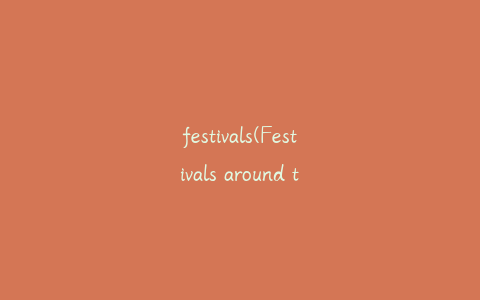Festivals and celebrations of all kinds have been held everywhere since ancient times. These events often reflect a community’s culture, traditions, and values, and they can be tied to various factors such as the changing seasons, religious beliefs, historical events, or the honoring of significant individuals. Western festivals, for instance, include New Year’s Day, Valentine’s Day, Easter, April Fool’s Day, Mother’s Day, Father’s Day, Halloween, Thanksgiving, Christmas, and Tree Planting Day, among others. Each of these festivals carries its own meaning and is celebrated with specific customs.
In contrast, Traditional Chinese Festivals like the Spring Festival (Chinese New Year), Dragon Boat Festival, MidAutumn Festival, TombSweeping Day, Double Seventh Festival (Chinese Valentine’s Day), and Double Ninth Festival each hold deep cultural significance. For example, the MidAutumn Festival, a time for family reunion, involves eating mooncakes and admiring the full moon, symbolizing unity and harmony.
In educational contexts, such as high school English classes, units on “Festivals around the World” are designed to introduce students to the diversity of global celebrations, enhance their vocabulary related to festivals and cultures, and improve their reading and discussion skills. Lessons might involve discussing the origins, traditions, and activities associated with different festivals, as well as encouraging students to compare and contrast these with their own cultural celebrations.

For instance, the Dragon Boat Festival in China commemorates the poet Qu Yuan, while Columbus Day in the USA remembers Christopher Columbus’ arrival in the New World. These festivals not only celebrate but also serve to remember and honor important figures in history.
Overall, the study of festivals worldwide provides a window into the rich tapestry of human culture, fostering understanding and appreciation for the various ways people come together to celebrate life’s milestones and shared experiences.
